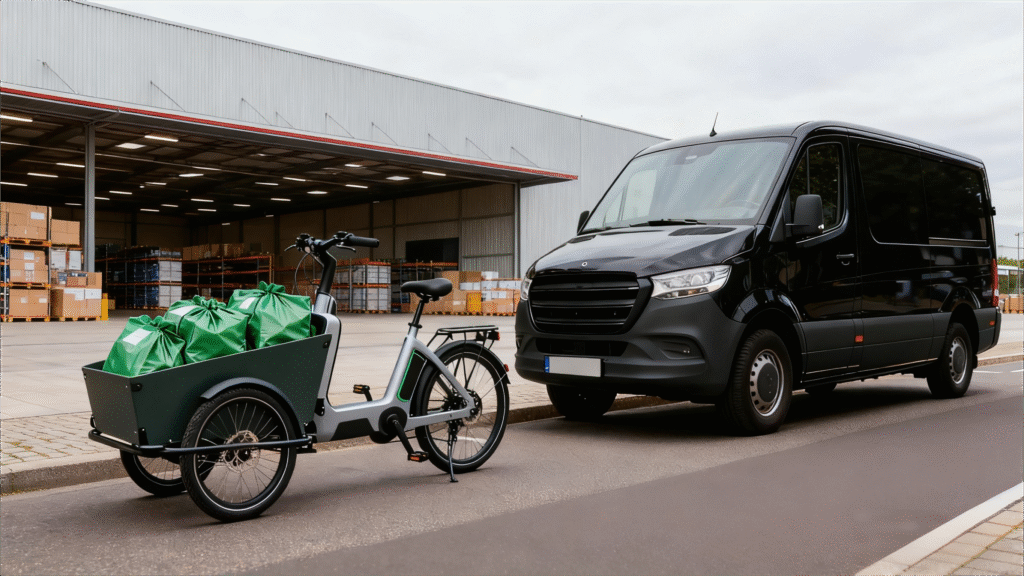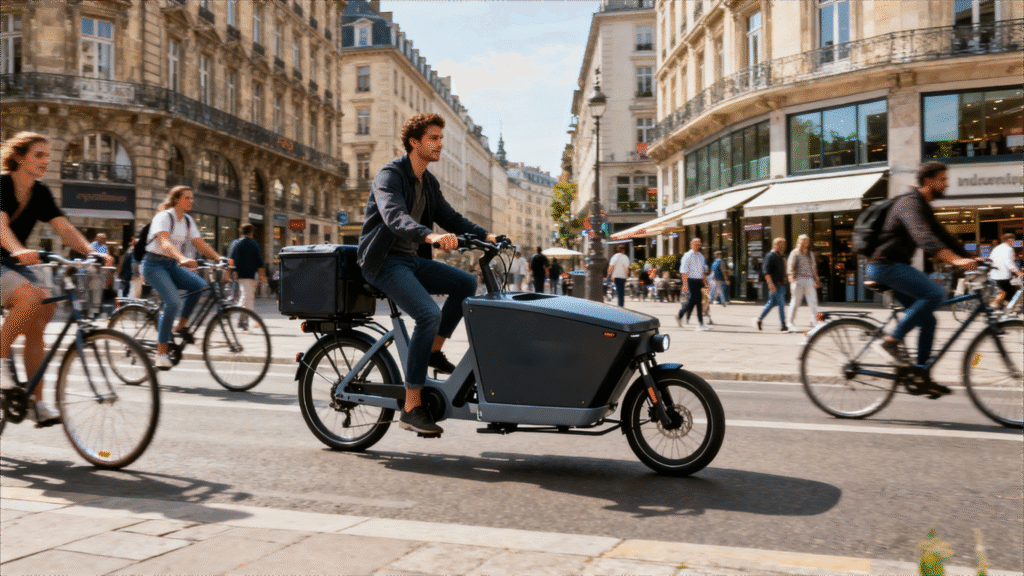
In today’s urban logistics landscape, last-mile delivery is both a challenge and an opportunity. Congestion, environmental regulations, and rising fuel costs are putting pressure on businesses that rely on city-based transport. I have seen first-hand that the cargo e-bike market is no longer experimental—it is a proven and scalable B2B logistics solution that offers measurable benefits in terms of cost, efficiency, and sustainability.
From total cost of ownership (TCO) advantages to fleet electrification trends led by industry giants, the conclusion is clear: electric cargo bikes for urban delivery are one of the best investments a business can make today.
Why Cargo e-Bikes Work for Last-Mile Delivery
I often hear the same question from logistics managers: “Can an e-bike really replace a van?” The answer is yes, in the right context. A study by Gruber et al. (2014) found that in German postal deliveries, e-cargo bikes outperformed small vans in dense urban areas, particularly on short multi-stop routes.
The success of large logistics providers reinforces this evidence. DHL’s “Cubicycle” pilot in Rotterdam showed higher delivery productivity per hour compared to vans. Amazon has gone even further, investing £300 million into decarbonising its UK fleet, including thousands of e-cargo bikes deployed from micromobility hubs in central cities.
These examples demonstrate that cargo e-bikes are not a niche alternative but a mission-critical component of last-mile delivery.
Total Cost of Ownership: Cargo e-Bikes vs. Vans
For businesses, the financial argument is even more compelling than the environmental one. A purpose-built electric cargo bike typically costs between $3,000–$10,000, compared to $25,000–$40,000 for a small delivery van.
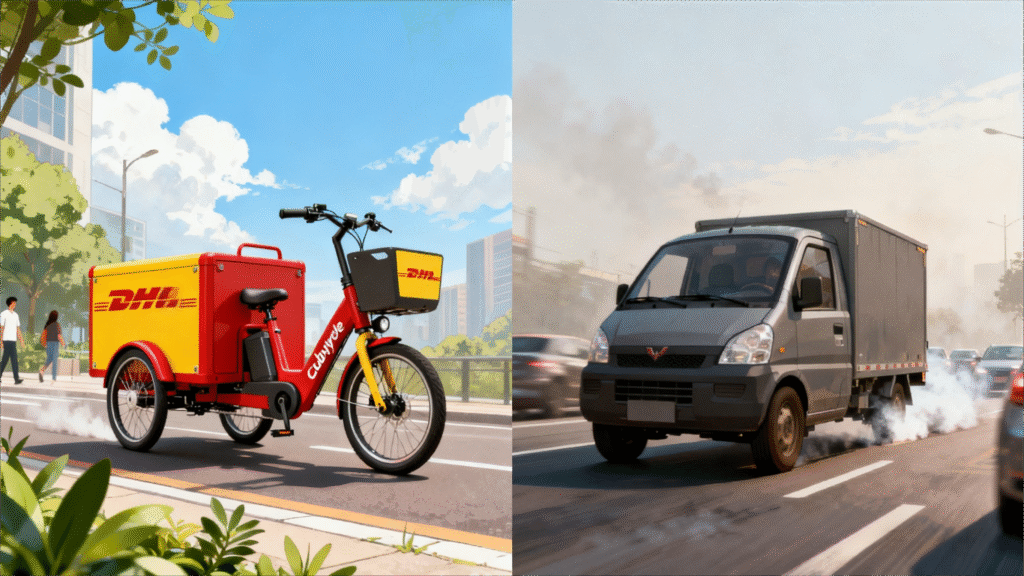
Operating costs widen this gap:
- Annual energy costs for a bike average $150 versus $2,500 in fuel for a van.
- Maintenance averages $300 per year for a bike, compared to $1,500+ for a van.
- Parking fees, tolls, and congestion charges largely disappear for bike fleets.
This translates into an annual operating cost of just ~$650 for a cargo e-bike, compared with ~$7,200 for a van. ROI can be achieved within 6–12 months.
These findings are consistent with Melo & Baptista (2017), who demonstrated that the lifecycle cost of cargo e-bikes is far below that of conventional vans in urban settings.
Fleet Electrification: Lessons from Industry Leaders
When I look at the strategies of companies like DHL and Amazon, I see more than sustainability branding. This is long-term economics. DHL operates the world’s largest electric fleet, with over 42,000 vehicles, while Amazon is on track to deploy 10,000 electric vehicles in the UK by 2025, supported by urban micromobility hubs.
Their decisions align with wider academic and policy analysis. For example, European Environment Agency (2021) highlighted that cargo e-bikes are no longer marginal, but central to Europe’s sustainable transport transition.
The Upfront Cost Challenge
Of course, I understand the hesitation many small businesses feel. Even with the TCO advantage, the upfront cost of $2,500–$8,000 for a quality e-cargo bike can appear daunting.
Cherry et al. (2020) showed that the psychological and financial hurdle of initial investment remains the biggest barrier to adoption, even in markets with subsidies.
This is why electric vehicle subsidies and flexible financing models are crucial. By turning large capital expenditure into predictable monthly operating costs, adoption becomes far more accessible.
Policy, Subsidies and Urban Support
The role of policy cannot be overstated. Many European cities now provide direct purchase grants or tax benefits to encourage sustainable transportation adoption.
Municipal subsidies and dedicated cycling infrastructure are key drivers in fleet decision-making. Without them, many SMEs would continue relying on vans despite the clear cost advantages of cargo e-bikes.
Emerging Business Models: Making Adoption Easier
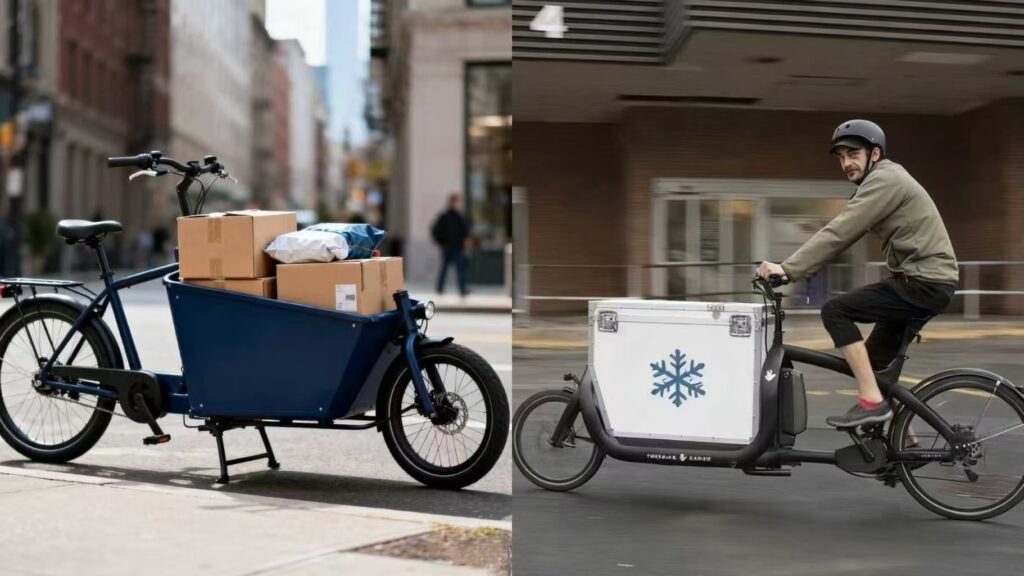
Innovative financing and usage models are rapidly expanding. Leasing, rental, and pay-per-use arrangements reduce the barrier for businesses with limited cash flow.
Research by Schliwa et al. (2015) confirmed that shared and flexible ownership models significantly increase the likelihood of businesses trialling and scaling new cargo e-bike fleets.
This is where the modular electric cargo bike for logistics also plays a role: with designs tailored for specific use cases, from food delivery to parcel logistics, businesses can adopt precisely the configuration they need without overspending.
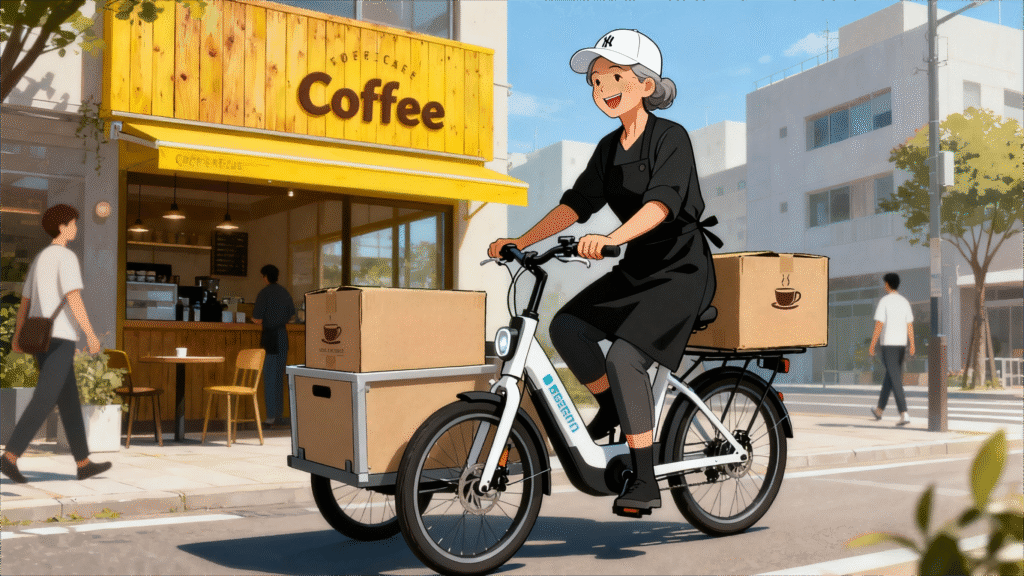
You may interested in Smart Customisation of Cargobike.
What This Means for Small Businesses
The economic and operational logic is not exclusive to global giants like DHL or Amazon. In fact, I believe the best cargo e-bike for small business is one that combines modular design, cost-efficiency, and after-sales support.
By choosing the right model and financing approach, SMEs can achieve:
- Faster ROI than with vans
- Exemption from congestion zones and parking fees
- Enhanced brand value through green credentials
- Greater flexibility in urban delivery
More reading:A Guide for B2B Buyers and Distributors
Conclusion: A Scalable B2B Logistics Solution
For fleet managers and business owners, the question is no longer if cargo e-bikes work, but how fast you can integrate them into your operations.
Supported by cost advantages, policy incentives, and proven performance across Europe, cargo e-bikes are redefining last-mile delivery and fleet electrification strategies.
The opportunity for B2B logistics is clear: adopt now, benefit immediately, and align with the future of urban logistics.
Maybe you want learn more cargobike solution, contact us.
You may want to learn:Complete Guide to Cargo E-Bikes

